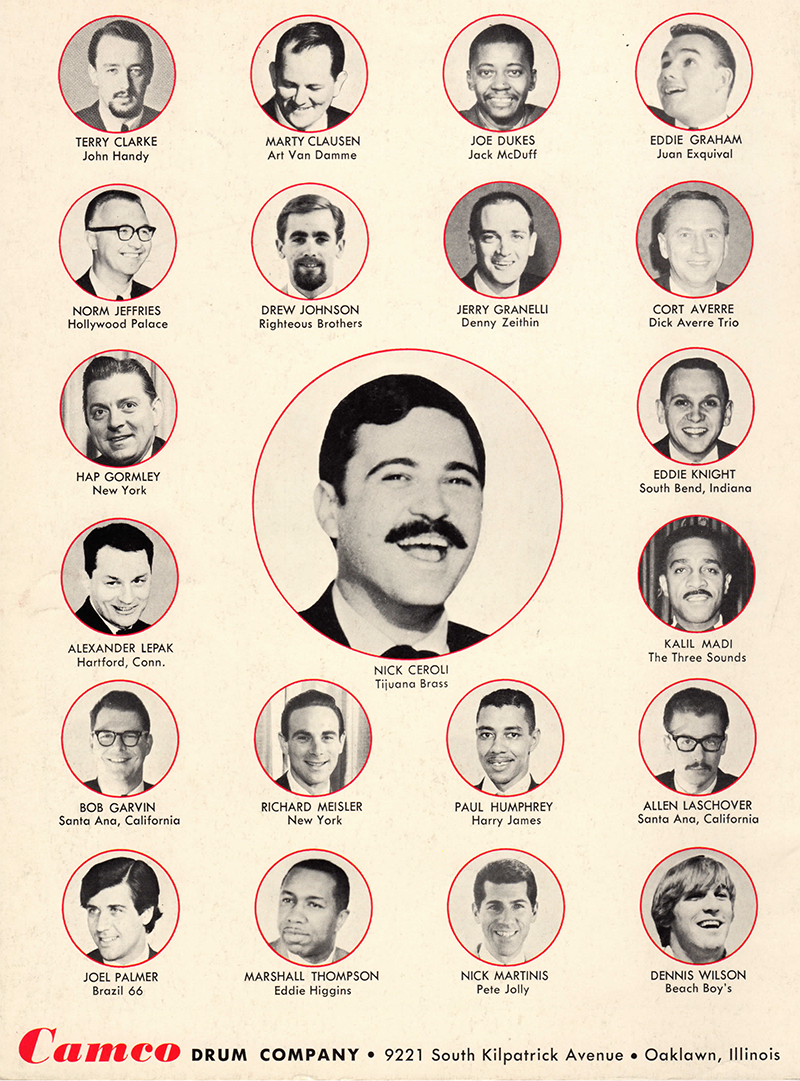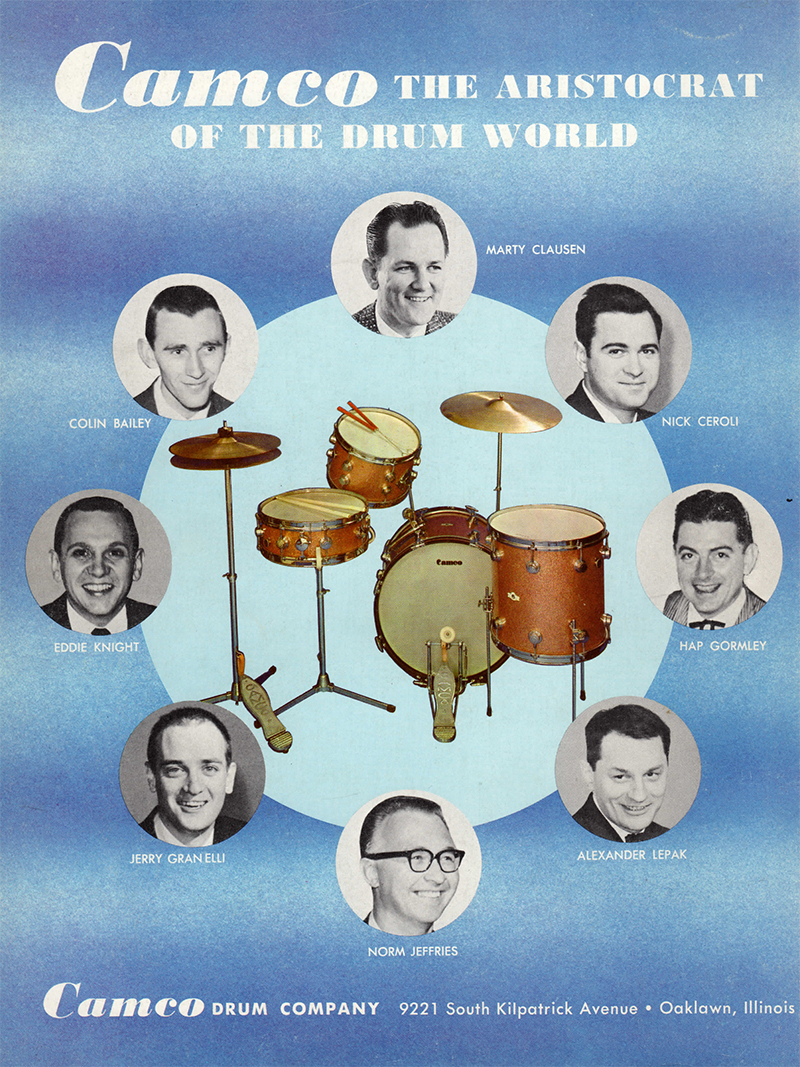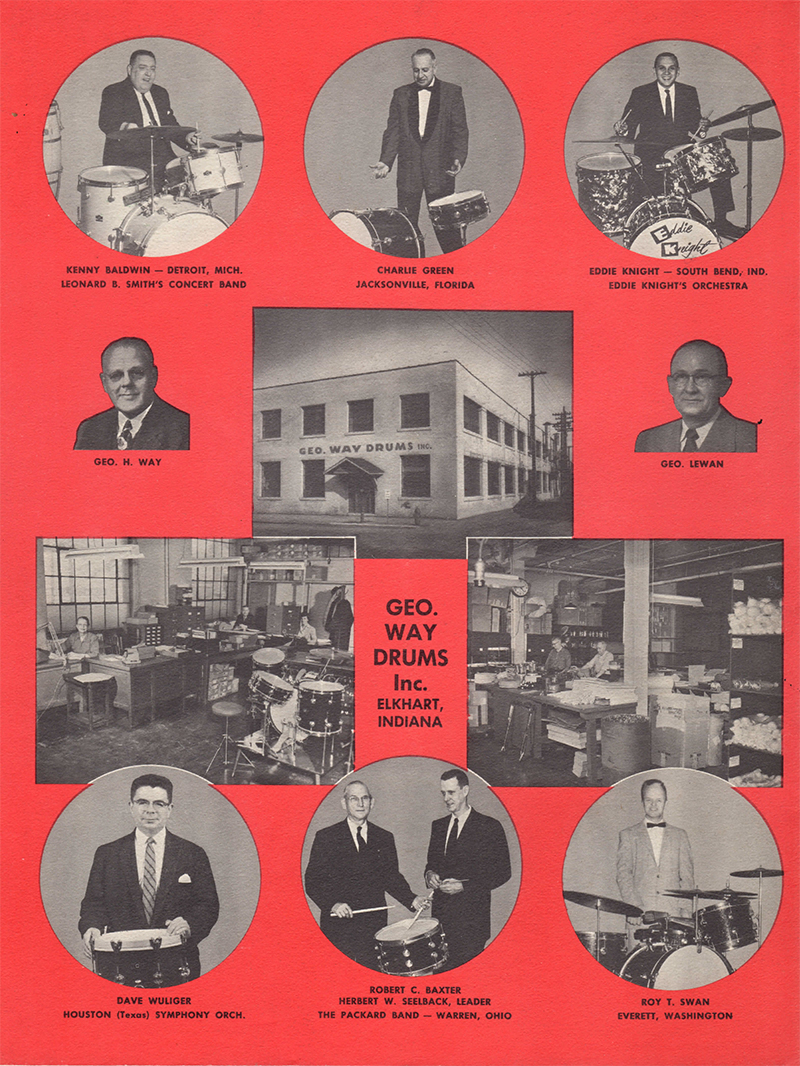"That one is in great shape. I estimate the value to be $600-$800" - Ronn Dunnett, owner of George Way Drums
Eddie Knight
I went to visit Eddie Knight at his Drum Studio in South Bend. I called him to ask if he had an email address because Mike Kaskell in England asked me. A Camco set with an “Eddie Knight” sticker was in England.
No, Eddie doesn’t have an email address. He did tell me he had a leather bound catalog cover that had belonged to U.G. Leedy. That’s like telling me he had George Washington’s uniform or Abe Lincoln’s hat. “I’ll be there”.
South Bend is over two hours from me and it took me a few months to come up with a second reason to get to that part of my state.
Eddie and I made an appointment and I went to his studio, up 23 steps from ground level and I walked into “Oz”.
Because I am old enough to remember great old drum stores, I am familiar with the sights of old Camcos laying around and snare drums sitting on the floor and stuff just everywhere. This was no chrome and glass and steel modern designed music store. This was no dainty well dusted showroom. This was not a Madison Avenue inspired anything. This was a dyed in the wool drum studio just like they used to be. I just wanted to breathe the air and get high on 50 years of everything.
There were more autographed pictures than I could count – stars on sets, old students on sets, black and white shots, vivid color, faded color, and old advertising pieces. My running statement was that I was on sensory overload.
Yes, I saw great drums, but for this piece, I will stay on topic. Eddie pulled out four leather bound Leedy catalogs – F & G. So we talked, prior to World War I.
Two of the catalogs had the gold embossed name of “U.G. Leedy” (the much revered president), one had the name “Alfred Kuerst”. Al, as he was known, was the VP of Leedy, really the second in command. Before George Way got there, Al was the guy quoted in trade magazines. He was also very popular because he paid each employee his/her wages in cash every week. The fourth catalog read “order clerk.”
So, these were the books taken to music stores and trade shows. The covers are permanent – the catalogs do not slip and out. This is what I came to see and they were just the start!
Somehow George Way got these special catalogs and his widow, Elsie, gave everything to Eddie over 40 years ago. Eddie had been a protégé of George, and George called him “Be-Bop”.
Well, Be-Bop has some other catalog treasures B and C and other Leedy catalogs. And every one I saw looked brand new. Leedy’s first catalog was not branded with a letter. It has the Cyclorama address in it, so that makes it before 1903. Therefore “B” has to have been published no sooner than 1904. And it looks new - uncreased, no spots, no loose pages, no cuts. Damn!
Eddie has boxes of his catalogs with many of them in plastic. We need an archivist, please!
I had a great albeit brief visit with Eddie who has taught drummers for 50 years. I’d like to go back, shoot the breeze and breathe the air.
His catalog collection is superb and while it was U.G. Leedy that got me there, it was Eddie Knight who kept me in riveted attention.
I never would have guessed we have a rival to the Library of Congress in downtown South Bend, Indiana.
Ronn Dunnett's Early 1900s Advance Drum Company Snare
A very special treat for everyone today... I know of only 4 examples of this particular snare drum and I have only actually SEEN one - mine - before this one landed on my bench. The other two are reported to be in the hands of Joe Montinerri and Johnny Craviotto (however Johnny says his may have been lost or stolen). This is an Advance Drum Company snare drum. The Advance Drum Company is the first Canadian drum company ever and was started by George Way in Edmonton, Alberta in the early 1900s.
George Way was responsible for a substantial number of inventions that remain in use on modern drums. Way invented the swivel / self-aligning lug and the first parallel action throw off. He was the first to ever wrap a drum in a pearl finish. He also introduced the China cymbal (what he called the "Chinese Sneeze" cymbal.
I'm not sure if this drum was painted at the Advance factory or if it was painted afterward. Either way, as you can tell by the head it has been around for a very long time - through 2 world wars and a lot more.
The owner brought this to me and asked me to make it playable. I agreed to do this, but with the understanding that I would not remove any of the patina. It is an amazing piece of drum history and while I look forward to hearing it I will do my utmost to maintain the integrity of the drum as you see it here.
-Ronn Dunnett www.dunnett.com





